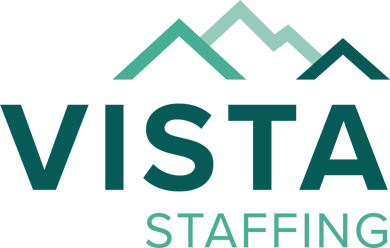Back to The Workforce Optimization Blog
Key Points to Recruit More Physicians Now

As an in-house recruiter, your organization relies on you to find candidates that meet certain qualifications and match your practice culture. On the national landscape, recruiters report a continued increase in the number of open requisitions each year. The mounting openings to a large degree are due to increased patient panels, augmented service markets (a byproduct of mergers and acquisitions), physician turnover, and a growing population of retiring physicians. Pressured timelines combined with a highly competitive staffing market, shallow candidate pools, and candidate ghosting*, for many of us, have sprouted a gray hair or two. Our hope is to provide renewed awareness on approaches and insight that will contribute to your continued success. With more than 50 years of collective recruitment experience, we have unveiled five key points to help you recruit more physicians now!
Take Charge
Take charge from the beginning and pull a group of stakeholders together to meet regarding the opening. During that meeting, you will not only receive valuable information regarding the practice and the picture of the perfect candidate, but you should also test the waters for any issues that may arise in the future. This is a wonderful time to ask things like “During the interview, is there a chance a candidate will hear anything negative from others in the group?”, or “Is everyone in the practice on-board with recruiting another physician into your practice?” The key is in part the questions to ask, but more importantly, the answers you glean from the nonverbal communication. During your discussion, listen to their tone, observe their body language and decipher what is NOT said, yet apparent through pauses and moments of awkward silence.
As the physician recruiter, your success in placing physicians requires that all those participating in the process are level set. From leadership to staff physicians, a consensus of support for recruiting a new physician often rests on you to take charge in laying the foundation.
Devil is in the Details
Now that you have unified support with your administration and incumbent physicians, the next critical step is to organize a recruitment plan that sets the tone for a successful strategy. To start, identify the physician audience offering the best match for the position. Keep in mind, you can always tweak your physician audience throughout the process. As a suggestion, start with physicians who currently live, have ties or possess a license in the opportunity’s state location. If there is a desired skill set or specific requirement such as fellowship training, you may want to include this detail in your query when designing a targeted list. The main objective is to identify physicians who match the ideal candidate profile and optimize responses from prospects expressing interest to learn more about the opportunity.
Before enacting a plan, having empathy regarding an individual preference as to how, when, where and what people like to be communicated about by you or anybody is critical. We learned from an array of surveys that repetitive messaging on various platforms is key.
We recommend starting with an aggressive, multiprong tactical approach using a variety of resources simultaneously. Most plans include advertising and marketing the opportunity on several job boards, scheduling regular email and text campaigns, engaging your LinkedIn network, and proactively searching your database along with any contracted databases for physicians to contact by telephone, providing a comprehensive approach with high probability for success. And, while it is often regarded as “old school”, great recruiters pick up the telephone to converse with physicians about their qualifications, location, and practice preferences.
Get the Word Out
In our global market, physician candidates are not confined to the Continental United States. Over the years, we have successfully recruited and placed US-trained physicians situated on another continent while they were serving in the military, living as an ex-pat, performing mission work, or serving on a Doctors Without Borders assignment. In marketing your opportunity, your ability to get the word out globally is vital in finding great candidates off the beaten path.
Time is of the Essence
Depending on the level of openness and time sensitivity of the search, some rural hospitals along with challenging urban locations are entertaining innovative employment models. In 2018, models with growing popularity include two physicians sharing a full-time position with each working part-time hours, full-time employment with workweeks consisting of three 12-hour days or four 10-hour days, and the outpatient practice offering a blocked schedule in which a physician works 2 weeks per month without relocating to the community. These models along with practice dynamics in which a physician from another city or state interested in practicing “perm” without a commitment to relocate has demonstrated a win-win solution. Central to the recruitment success for the hospital is adding a new physician to the practice equation who will care for patients and relieve the impending burnt-out of the incumbent providers. Also, under this model, the age-old problem of a candidate eliminating themselves due to the unwillingness of a spouse or high school-aged child to relocate is less of a factor. The advantages include a physician as a regular member of the staff, a stimulating practice dynamic offering diversity in practice environments, and the physician’s ability to return to their home location without a relocation disrupting their family’s preferences. Innovative practice models offer a variety of possibilities for an organization to secure physicians as a member of the medical staff while accommodating the physician’s lifestyle preferences.
Recently, I spoke with a Family Medicine physician who had a successful private practice in coastal Florida. His monthly schedule was divided between working 2 weeks in his private practice and the other two weeks in a rural community in Georgia. “It works out great! The hospital in Georgia searched for four years before I started working for them. The office schedules patient physicals and follow-ups based upon my schedule.”
Innovative models offer hospitals a real possibility to recruit physicians who will successfully maintain a patient panel and continuity of care. With no end in sight for market space with high demand and low supply, the ideal set by facilities that candidates need to relocate and become a community member may be shortsighted. Innovative practice models offer practices endless possibilities to close the gap between the continuity of patient care with a perm provider and the retention of overworked incumbent physicians.
Over the years, Kurt and I have dissected and even debated the key aspects of successful placements. We agreed on a cohesive team, active communication, finding a candidate/client match, and having a forward-thinking recruitment plan. All of these and a few select others have rightfully found a home on our list. And, while we agree to disagree on a few others, one that we adamantly have a consensus on is regarding a sense of urgency. To us, a sense of urgency is not a hard-pressured sell to hire but rather a commitment to retain the momentum of a physician’s interest in an opportunity. Integral to successful placements is taking ownership in moving the process forward. When days turn to weeks to engage a candidate with a conversation or site interview, the probability of securing the physician declines dramatically.
As an example, a physician candidate who waited two weeks to be called by a client commented during a follow-up telephone conversation, “It’s been two weeks, either they are not interested in me or they are just too busy to call me. I am not sure which is the case but either way, based on my experience, this is not an opportunity I have interest anymore.” Delays in contacting a candidate, how we approach scheduling interviews and interacting with candidates overall, communicate a strong message about us and our practices. Candidates who hear from a practice representative within a few days, experience follow-up communications when promised, and are scheduled for a site visit during a mutually agreed upon date communicate a strong message to them about interest sincerity, and the quality of your organization.
The bottom line is, the competition is the fiercest we have ever seen. Organizations demonstrating their high level of interest in candidates through an apparent sense of urgency are the ones that come out on top!
Summary
There are too many opportunities available for physicians to seriously consider organizations that do not demonstrate the highest level of interest. The key points in recruiting more physicians now include:
- Be the facilitator to bring everyone together building a united front
- Devise a well-orchestrated recruitment plan together and then execute with a commitment towards success
- Embrace the possibility of innovative employment models that will expand your candidate pool to include those looking for a non-traditional model
- Make a commitment to the momentum in processing candidates as the #1 key in recruiting more physicians now!
* Ghosting, a prevalent problem in strong job markets, includes candidates not showing up for interviews, the first day of employment, vanishing, and/or becoming unresponsive to your calls after expressing initial interest.



